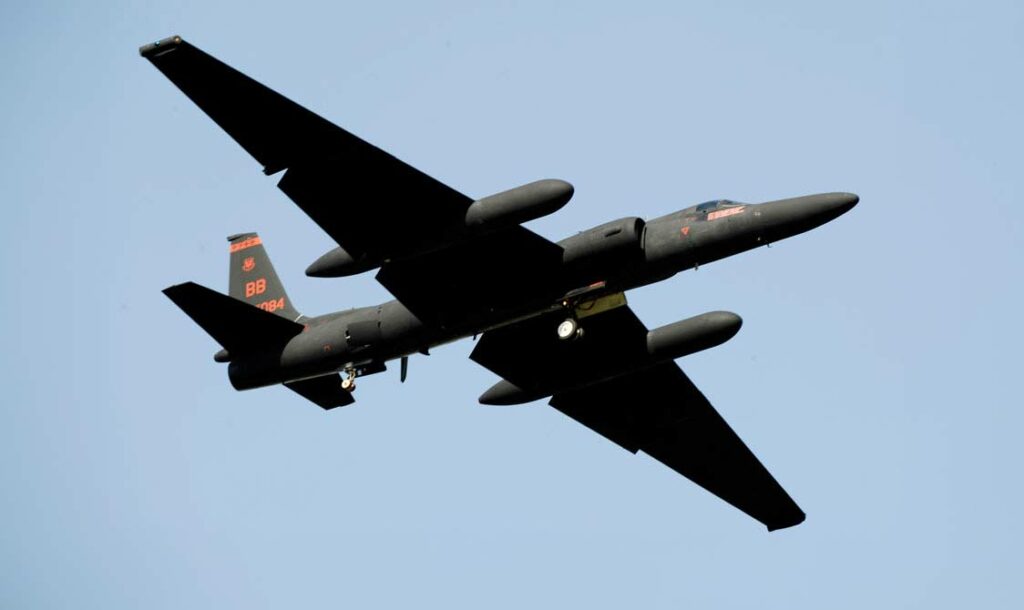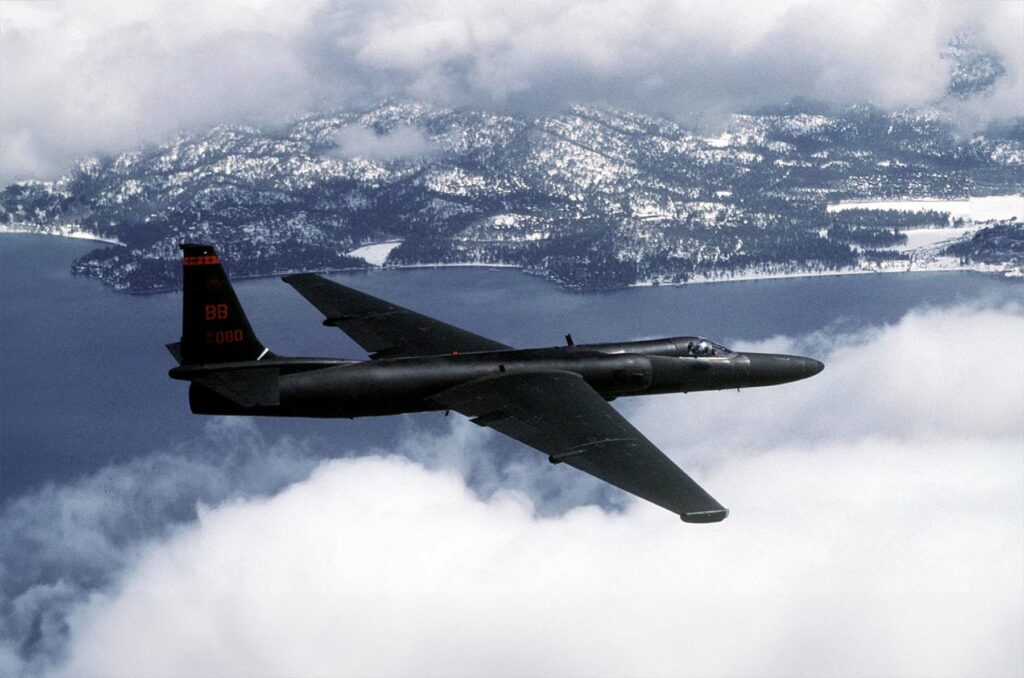The Lockheed U-2, known as “Dragon Lady,” is a high-altitude reconnaissance aircraft operated by the USAF, featuring advanced sensors and a long service history.
In brief
The Lockheed U-2 Dragon Lady, an iconic high-altitude reconnaissance aircraft, has been a key asset for the United States Air Force (USAF) since the 1950s. Designed for all-weather intelligence gathering, the U-2 can fly at altitudes over 70,000 feet, providing critical information to military decision-makers. Known for its distinctive long wings and capability to carry a variety of sensors for different missions, the U-2 has been involved in many notable events, including the Cuban Missile Crisis. Despite its age, the U-2 has undergone several upgrades to maintain its relevance in modern warfare, proving its versatility and enduring value in intelligence, surveillance, and reconnaissance (ISR) operations.
The Lockheed Martin U-2 Dragon Lady is a testament to the enduring utility and adaptability of high-altitude reconnaissance aircraft in modern warfare.

History of the Development of the Lockheed Martin U-2 Dragon Lady
In the aftermath of World War II, the United States sought better strategic aerial reconnaissance capabilities to monitor Soviet activities and prevent surprise attacks like Pearl Harbor. The need for an aircraft capable of high-altitude reconnaissance was clear, as existing aircraft were vulnerable to Soviet defenses. The U-2 program began in the early 1950s, with the aim to develop an aircraft that could fly above 70,000 feet and avoid detection by Soviet radar.
Lockheed’s Skunk Works, led by Kelly Johnson, designed the U-2, a single-engine aircraft with a glider-like design, allowing it to reach and sustain high altitudes. The U-2’s first flight occurred in August 1955, marking the beginning of its service as a key intelligence asset for the United States.
Throughout the Cold War, the U-2 played a crucial role in gathering intelligence. Its most famous mission was the capture of Soviet missile deployments in Cuba in 1962, leading to the Cuban Missile Crisis. Despite evolving threats, the U-2 continued to adapt and remain a valuable asset for the USAF.
Design of the Lockheed Martin U-2 Dragon Lady
The U-2 Dragon Lady is a high-altitude reconnaissance aircraft characterized by its unique design. It features a lightweight, fuel-efficient General Electric F118-101 engine and a distinctive long-wing, glider-like structure that enables operation at extreme altitudes. The U-2 has a wingspan of 105 feet, a length of 63 feet, and a height of 16 feet. The aircraft has an empty weight of 16,000 pounds and a maximum takeoff weight of 40,000 pounds.
Designed for intelligence, surveillance, and reconnaissance (ISR) missions, the U-2 carries advanced sensors, including electro-optical and infrared cameras, synthetic aperture radar, and signals intelligence equipment. It has undergone various upgrades, such as the Block 10 electrical system, which replaced legacy wiring with fiber-optic technology.
U-2 pilots wear full-pressure suits similar to those used by astronauts and require assistance from a “chase car” during landings due to the aircraft’s unique landing gear and limited forward visibility.
Performance of the Lockheed Martin U-2 Dragon Lady
The U-2S, the latest variant of the U-2, is powered by a General Electric F118-101 turbofan engine, producing 17,000 pounds of thrust. This powerplant allows the U-2 to reach a maximum speed of 410 mph, with a service ceiling above 80,000 feet and a rate of climb of 9,000 feet per minute. The aircraft has a range of over 7,000 miles, enabling long-duration missions without the need for air refueling.
The U-2’s high-altitude capability and advanced sensors make it an unparalleled platform for gathering intelligence in various weather conditions and operational environments. Its ability to carry a wide array of sensors allows it to adapt to different mission requirements.
Variants of the Lockheed Martin U-2 Dragon Lady
The U-2 program has seen several variants, including the U-2R, which featured a 30% larger airframe than earlier models. The U-2R incorporated underwing fuel pods for extended range and additional sensors. The U-2S, a re-engined version of the U-2R and TR-1A with modernized avionics and enhanced sensors, is the current operational variant.
The TR-1A was a tactical reconnaissance variant with modernized avionics and electronic countermeasures. Other notable variants include the U-2RT (a twin-seat trainer), the U-2EPX (a proposed maritime surveillance model), and the ER-2 and WU-2 (used for research and atmospheric/weather research, respectively).

Military Use and Combat of the Lockheed Martin U-2 Dragon Lady
The U-2 has been extensively used for military reconnaissance and surveillance since its introduction. It played crucial roles during the Cold War, providing vital intelligence on Soviet military capabilities. The U-2 was instrumental in the Cuban Missile Crisis and has been involved in various conflicts, including operations in Afghanistan and Iraq.
The U-2 has supported NATO operations and has been used for electronic sensor research, satellite calibration, and scientific research. The U-2S continues to serve in the USAF, with its role evolving to meet modern intelligence requirements.
The Lockheed Martin U-2 Dragon Lady remains a vital asset in the field of high-altitude reconnaissance. Its longevity, adaptability, and capability demonstrate the enduring importance of manned reconnaissance aircraft. Despite advances in unmanned aerial vehicles, the U-2 continues to play a critical role in intelligence gathering, showcasing its unmatched ability to operate in challenging environments and provide timely, high-quality intelligence.
Back to the Spy Planes section.